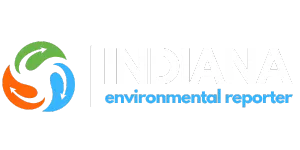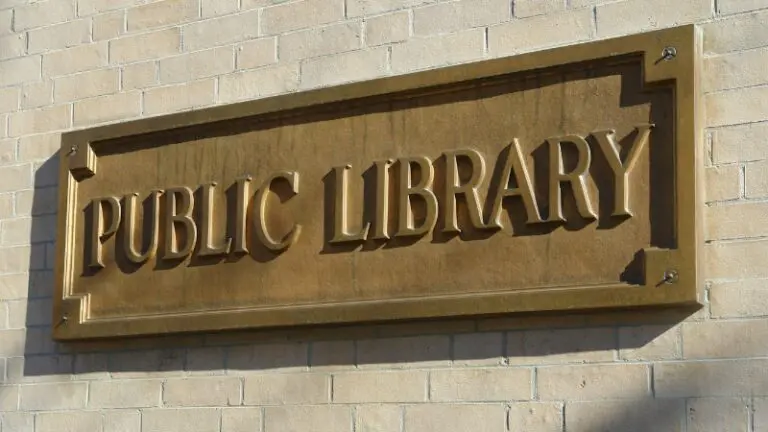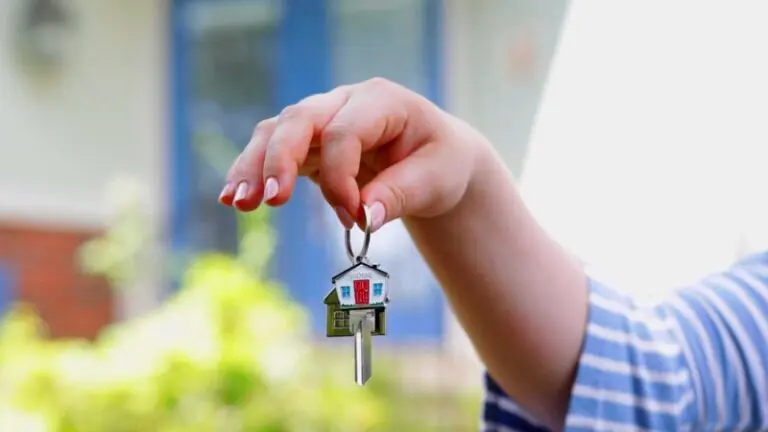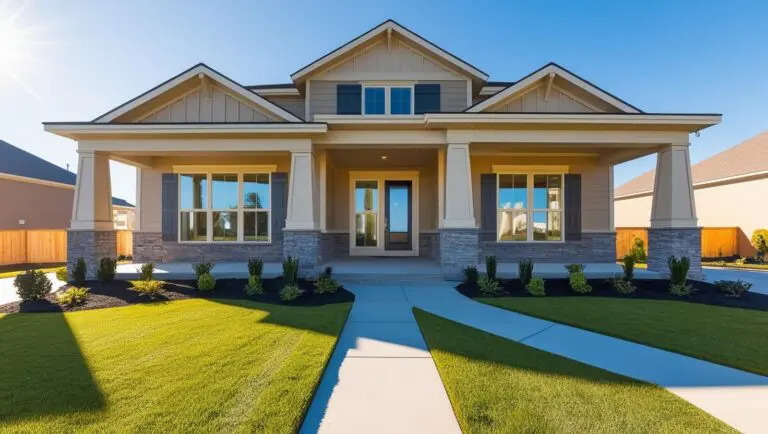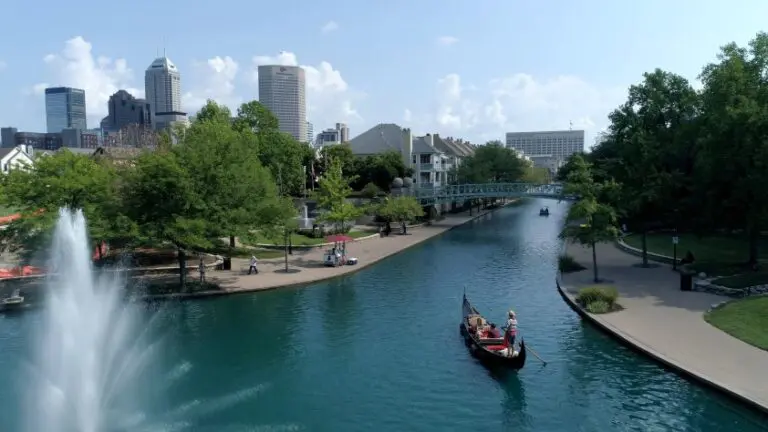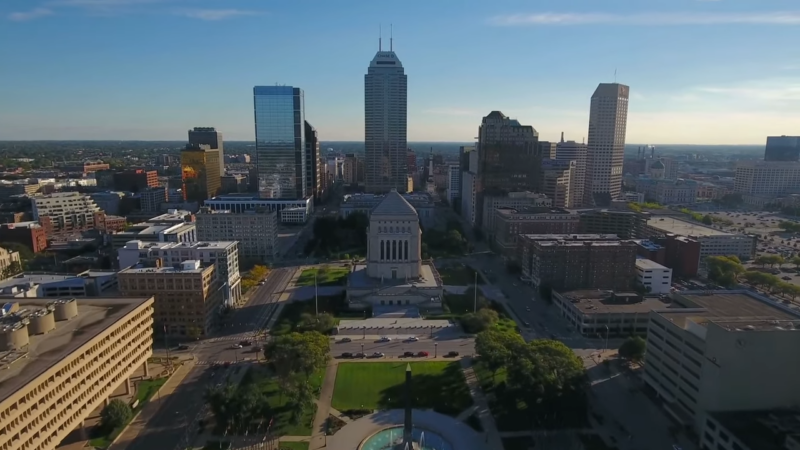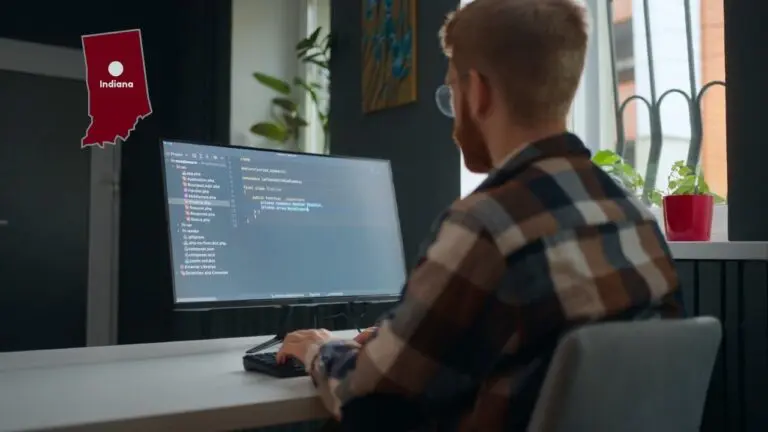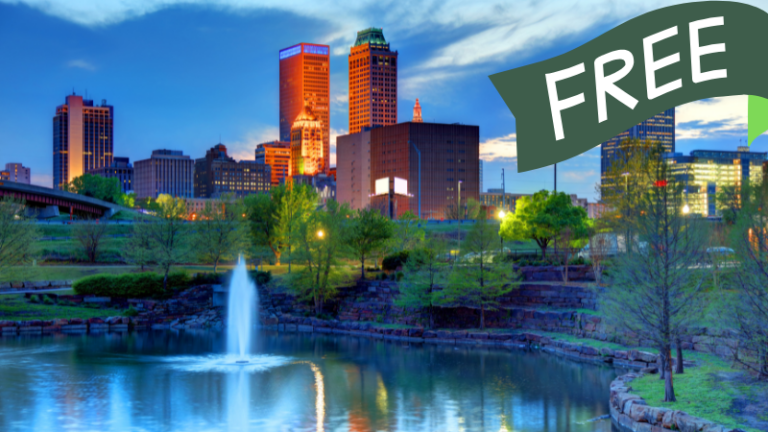Indianapolis, Indiana, known for its vibrant downtown and the famous Indianapolis 500, is experiencing some interesting shifts in population dynamics. According to worldpopulationreview.com, our main source, the city’s population stands at 876,665.
It’s a city rich in culture and history, but some changes are happening that are worth taking a closer look at.
Table of Contents
ToggleKey Takeaways
- The population of Indianapolis is currently 876,665, with a decline rate of -0.3% annually, resulting in a -1.18% drop since 2020.
- The city’s racial composition is diverse, with 55.72% White, 28.84% Black, 4.15% Asian, and smaller percentages of other races.
- The poverty rate stands at 15.86%, with the highest rate among Black residents at 23.93%, while Native Hawaiian or Pacific Islanders have the lowest rate at 6.31%.
- The average household income is $82,697, yet economic disparities remain significant, highlighting ongoing challenges.
- The unemployment rate is 5.6%, with a labor force participation rate of 67.2%, showing room for improvement in job creation.
- English is the primary language spoken by 85.23% of residents, followed by 8.29% who speak Spanish.
- The gender distribution is nearly equal, with 51.37% female and 48.63% male, and the median age is 34.3 years.
A City in Transition
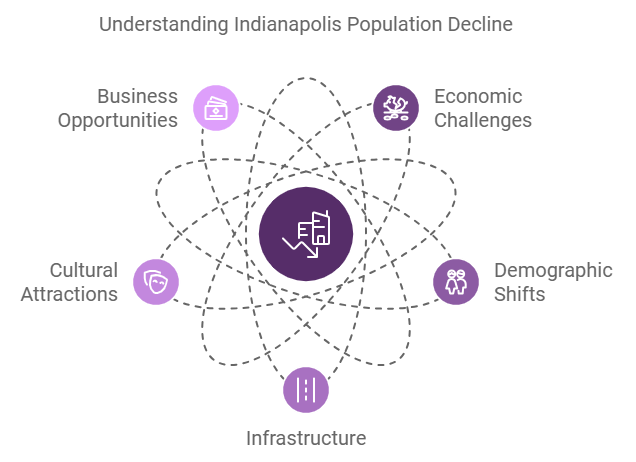
Indianapolis has seen a slight decline in population since the 2020 Census, with a drop of -1.18%. The city is currently shrinking at an annual rate of -0.3%. It’s a trend that has many people talking, especially considering the city’s robust infrastructure, cultural attractions, and business opportunities.
What’s behind this decline? There are a few factors at play, including economic challenges and shifts in demographics. In fact, if you’ve been following the news, you could have seen the projections for further population growth and what influences it.
Who Makes Up Indianapolis?
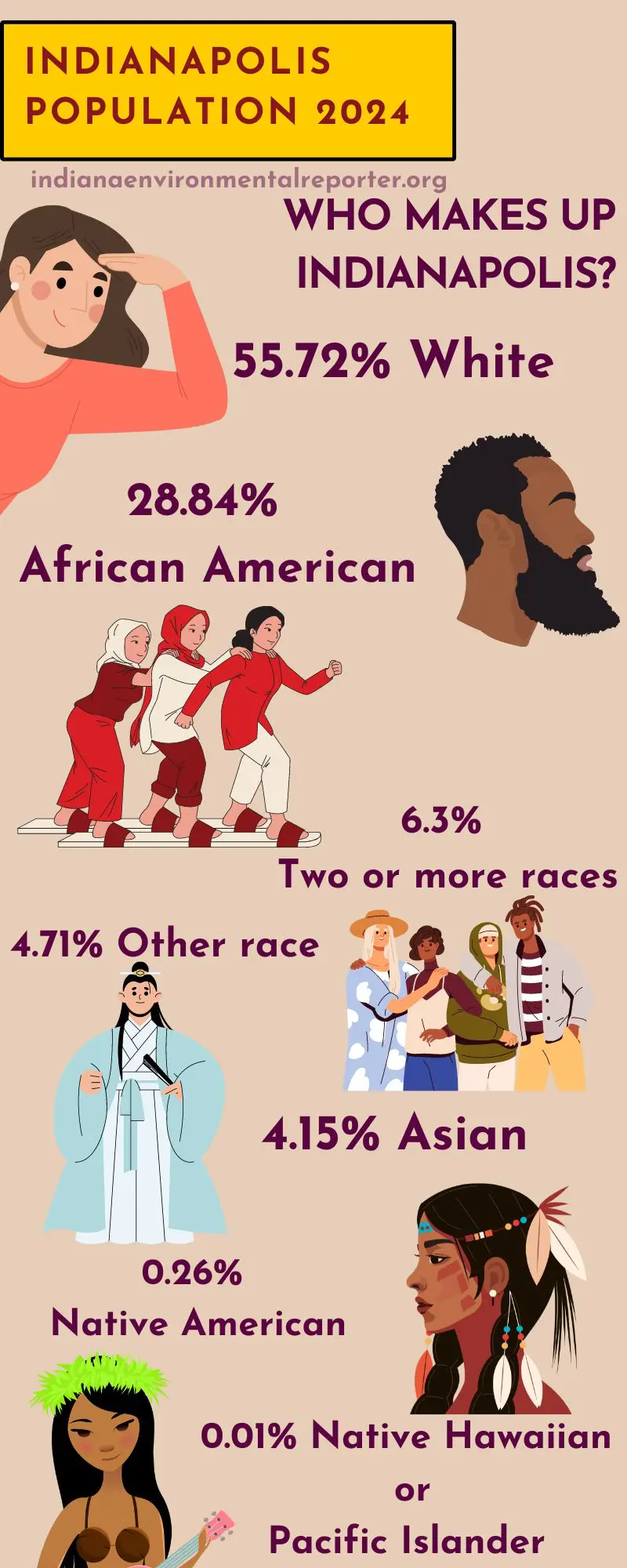
The city’s racial composition is diverse and multi-faceted:
- 55.72% White
- 28.84% Black or African American
- 6.3% Two or more races
- 4.71% Other race
- 4.15% Asian
- 0.26% Native American
- 0.01% Native Hawaiian or Pacific Islander
Indianapolis has long been known for its strong African American community, reaching a significant milestone in 2013 with 300,000 Black residents, representing nearly 29.3% of the population. This milestone highlights the city’s rich cultural fabric and the contributions of its diverse communities.
Economic Realities and Challenges
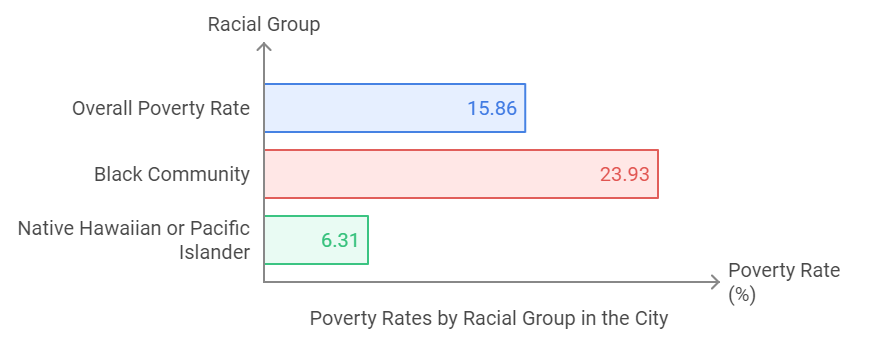
The city’s poverty rate is currently at 15.86%, a figure that points to underlying economic challenges. There’s a noticeable disparity in poverty rates across racial lines, with the Black community experiencing the highest rate at 23.93%.
Meanwhile, the Native Hawaiian or Pacific Islander community has the lowest rate at 6.31%. These statistics reveal a complex picture of economic disparity that needs addressing.
Education and Opportunities
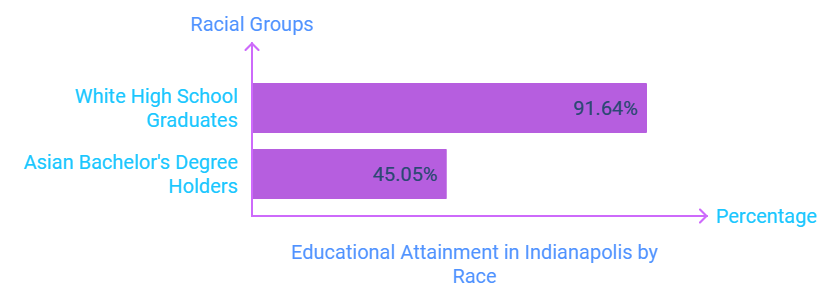
Education plays a crucial role in shaping any city’s future, and Indianapolis is no exception. The city boasts a high school graduation rate of 91.64% among White residents, the highest among all racial groups.
For bachelor’s degrees, Asian residents lead, with 45.05% holding such qualifications. These figures are promising but also highlight disparities that need to be bridged for the city to prosper uniformly.
The Downtown Appeal
Indianapolis has one of the most celebrated downtowns in the United States. With an array of movie theaters, museums, art galleries, and parks, it’s no wonder the city is often lauded for its vibrant urban core.
The downtown area isn’t just a hub for cultural activities but also a significant economic engine for the city. The development and revitalization efforts over the past few decades have transformed it into a bustling area that attracts tourists and locals alike.
Language and Culture
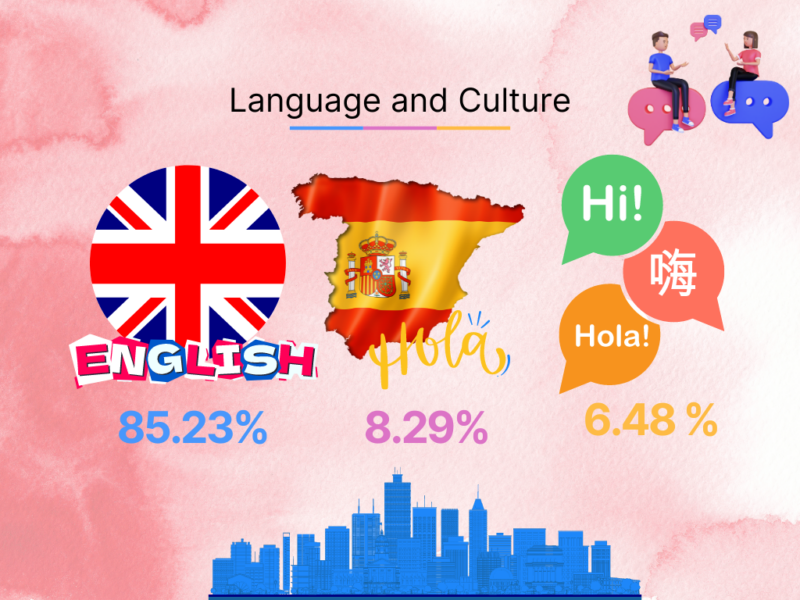
Language diversity is another hallmark of Indianapolis.
| Language | Percentage of Residents (%) |
| English | 85.23 |
| Spanish | 8.29 |
| Other | 6.48 |
Living and Density
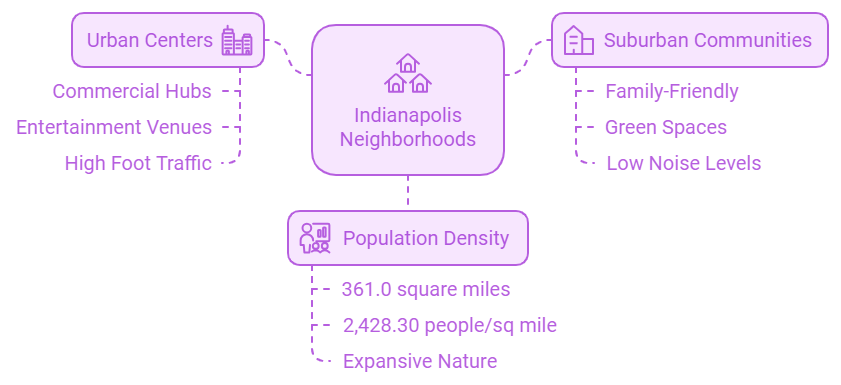
Indianapolis covers a vast area of 361.0 square miles, with a population density of 2,428.30 people per square mile. The city’s expansive nature means that there are plenty of neighborhoods with different vibes, from bustling urban centers to quieter, suburban communities.
It’s a place where you can find a bit of everything, depending on what you’re looking for in a city.
Gender Dynamics
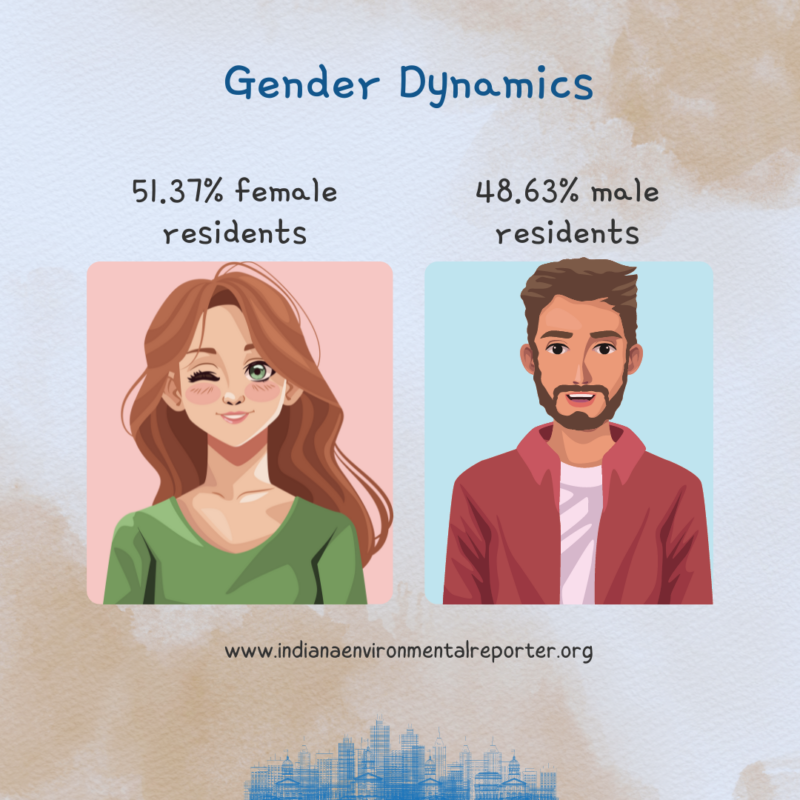
The median age is 34.3 years, slightly favoring females with an average age of 35.3 compared to 33.2 for males. This youthful demographic adds a dynamic energy to the city, fueling innovation, creativity, and community engagement.
Challenges and Opportunities Ahead
Indianapolis, like many other cities, faces challenges that are both unique and shared. The population decline and economic disparities are issues that require thoughtful policies and community engagement. But it’s also a city full of opportunities. With a strong educational foundation, a vibrant downtown, and a diverse population, there’s a lot to build on.
You may like Indianapolis Crime Rate in 2024 – An In-Depth Analysis
What Does the Future Hold for Indianapolis?
New Traditional Architecture is Beautiful, Durable, and Sustainable. This is the projected Central Canal at Indiana Avenue, Indianapolis, USA © Nir Buras & the Classic Planning Studio.
Visit https://t.co/NTS7H2PrlJ to learn more and get in touch! pic.twitter.com/e5dxPa678X
— Nir Buras (@Nir_Buras) September 24, 2024
It’s hard to say for sure, but there are plenty of reasons to be optimistic. The city has a strong sense of identity and a community that’s passionate about making it a better place to live, work, and play. Whether it’s through grassroots initiatives or city-wide programs, there’s a clear desire among residents to tackle the challenges head-on.
Investing in education, improving economic opportunities, and fostering an inclusive environment are just some of the ways Indianapolis can continue to thrive. It’s not going to be easy, but the city has a track record of resilience and innovation that suggests it’s more than up to the task.
Methodology
The data was cross-referenced and validated against multiple sources to ensure accuracy. Insights were contextualized using local news and community perspectives to provide a comprehensive understanding of the city’s demographic and economic landscape.
In Summary
Indianapolis is a city with a rich past and a promising future. Its population trends may be shifting, but that doesn’t change the essence of what makes it special.
With a collective effort from residents, businesses, and policymakers, Indianapolis can continue to be a city that not only survives but thrives in the years to come.
Sources
1. World Population Review – Indianapolis, Indiana Population 2024
2. News at IU – Indiana population growth projected to slow due to rising mortality, declining births
3. Medium – Indianapolis Is More Diverse Than You Think
